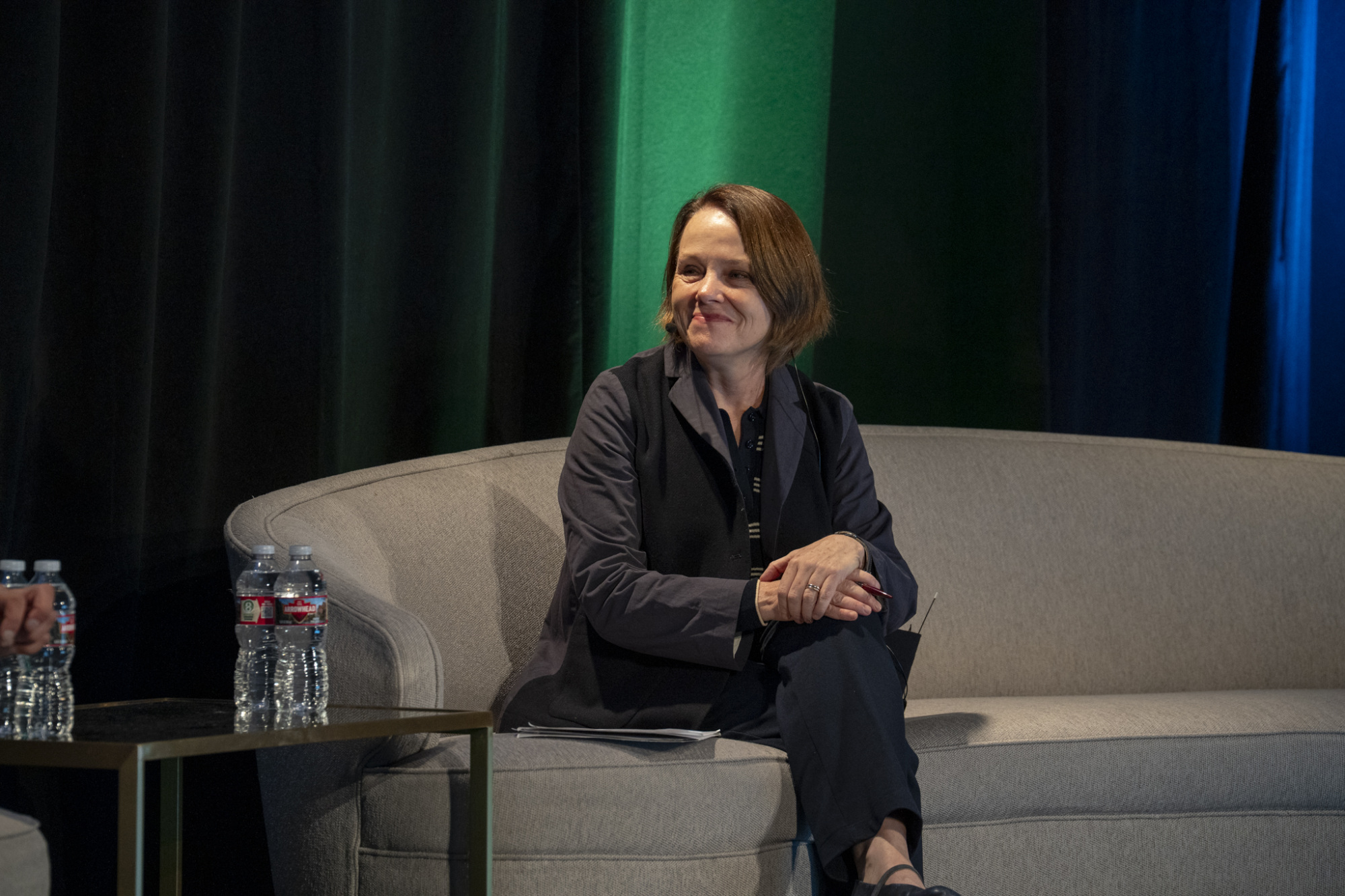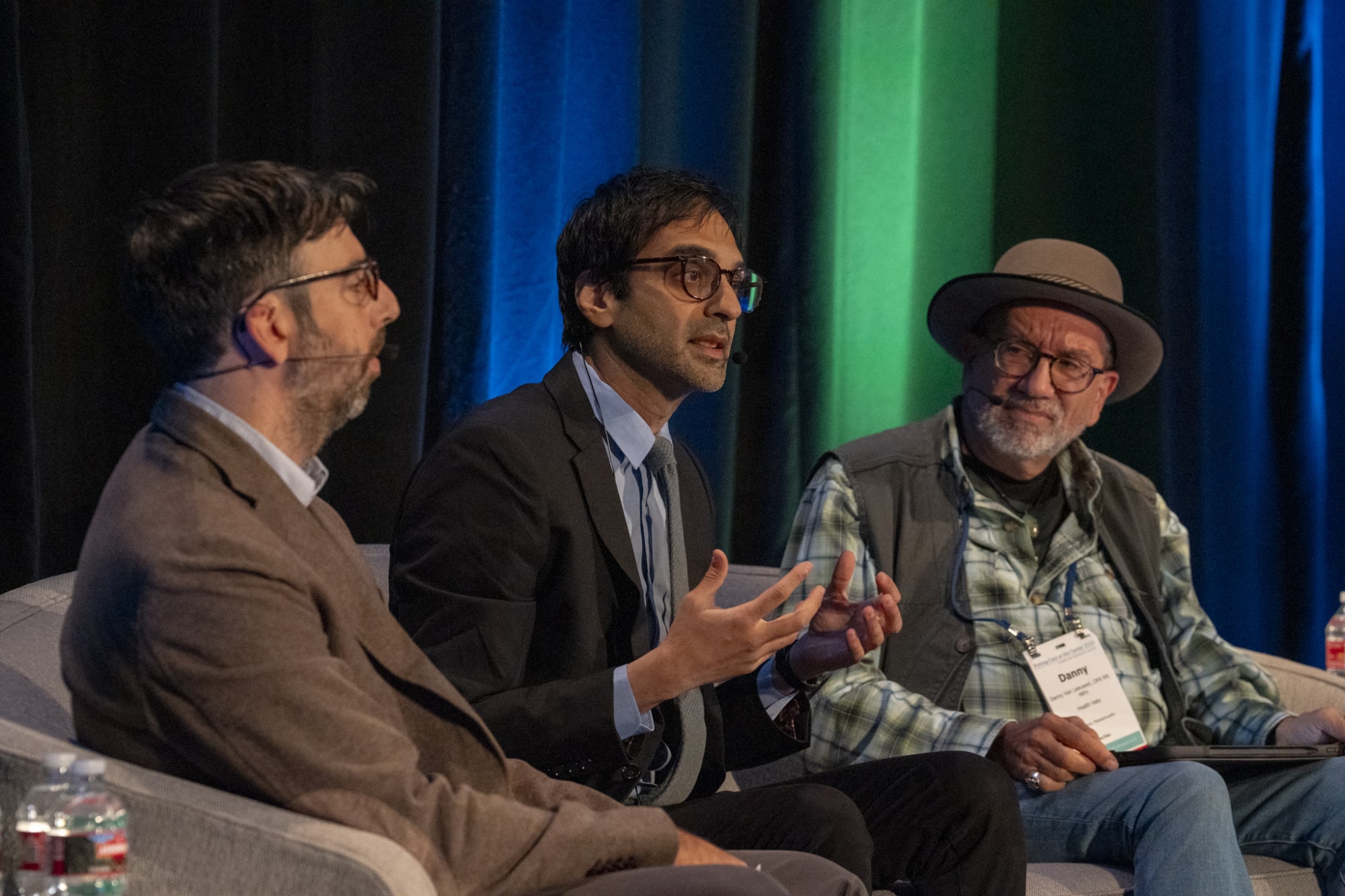Meeting the moment: You are not alone
A recap of Putting Care at the Center 2025


The feeling I want you to leave with is that you are not alone. You are not alone here today, you are not alone when you go back to your programs, and you are not alone when you’re with that client in front of you.
“We’re not just in a moment—we’re in a sustained period where our programs are being attacked.”
With that stark truth, Kathleen Noonan, President and CEO of the Camden Coalition, opened Putting Care at the Center 2025. This year’s theme, Meeting the moment, set the tone for the days ahead. From October 15–17, almost 800 leaders, front-line providers, and advocates in complex care gathered in Portland, Oregon, to confront a shared reality: growing threats to essential programs, increasingly fragmented systems, and the very real impact of dramatic funding cuts.
Yet even as she named the difficulties ahead, Kathleen’s message emphasized the power of community. “The feeling I want you to leave with,” she told attendees, “is that you are not alone. You are not alone here today, you are not alone when you go back to your programs, and you are not alone when you’re with that client in front of you.”
Her words framed the next three days: a call to see this moment as an invitation to connect, imagine, and act together. At times like this, human instinct is often to turn inward—to seek comfort in the familiar and retreat into silos. But throughout the conference, a resounding message emerged: now, more than ever, we must work together to rise to this occasion.

This work requires innovation, partnership, and a willingness to evolve.
Embracing the opportunity to imagine
While it can be difficult to feel optimistic about how our systems of care will weather this storm, meeting the moment can also involve leaning into imagination and creativity. Eric Hunter, President & CEO of CareOregon, the Camden Coalition’s local co-host for the conference, emphasized this before welcoming keynote speaker Zalika Gardner, a visionary educational leader from Portland. Zalika urged attendees to manage this destabilizing moment by engaging in critical hope, a practice which, “gives us the ability to look right in the face of oppression… while also simultaneously thinking about possibility.” That call to hold both struggle and possibility resonated across the three days of sessions, where workshops highlighted innovations from programs across the country.
Zalika’s sentiments were also echoed during the Thursday morning fireside chat, Navigating the moment in federal policy, featuring Dr. Shereef Elnahal, President of Oregon Health & Science University, and Dr. Purva Rawal, formerly Chief Strategy Officer at the CMS Innovation Center. The two reflected on how shifting federal priorities shape the future of complex care, Dr. Rawal saying, “We need to be responsive, acknowledge real difficulties, and work together to imagine the way we want the world and systems to look in five to ten years.”
The conversation evoked a poignant question, in a perfect world, what would our ecosystems look like, and how do we begin making this a reality?

We need to shape the AI around our care team members, how they deliver care to the patients, how they enter notes, and creating an embedded model where the technologists are embeded in the care teams so they have an appreciation for their day to day tasks. AI is a tool, our care teams are the experts.
Investing in collaboration
National Consumer Scholar Shanice Sims shared her vision for the future during the Story share, telling the audience, “I dream of a system where we don’t just measure success by numbers or efficiency, but by the wonder of a pattern well made– a system that cares for all of us. If we hold that vision together, then we can weave a healthcare system that isn’t only effective but also radiant with the beauty of our collective humanity.”
Across plenaries and panels, a simple answer arose. We dream of a system built on our collective strength—one that cannot come to be without aligning and acting together.
This year, the Camden Coalition put that principle into practice by introducing content partnerships—a new model that invited peer organizations to co-create conference programming. The National Center for Medical-Legal Partnership, PFCCpartners, and Society for Social Work Leadership in Health Care in partnership with Center for Health and Social Care Integration (CHaSCI) at Rush hosted special events tailored to their communities, including a pre-conference session, network breakfast and lunches, and workshop and Beehive content. These partnerships drew many first-time attendees, further enriching the cross-sector discussions and relationship-building that we know are so valuable.
One example of these important cross-sector conversations was the closing plenary, Artificial Intelligence (AI) in complex care: Applications, ethics, and opportunities. The session featured a candid conversation between Danny Van Leeuwen, founder of Health Hats, a podcaster, nurse, and advocate with lived experience, and Sadiq Patel, VP of Data Science & AI at Waymark. The discussion, moderated by Aaron Truchil of Camden Coalition, explored the emerging uses of AI in complex care settings. Danny explained the potential for AI to help patients and their families digest their healthcare information and “turn the firehose of health data into information that helps people make [informed] decisions.” Sadiq added that on the clinical side, AI should be used to assist complex care providers –not replace them– saying “AI is a tool, our care teams are experts.” The plenary offered insight into the real potential for AI to help simplify complexity and create more time for human relationships between providers and patients.
On Thursday, the plenary session CoORdinated care: Oregon’s model for whole person health moderated by Camden Coalition’s Mark Humowiecki spotlighted Oregon’s coordinated care model as a powerful example of collaboration in practice. Panelists Dr. Amit Shah of CareOregon, Dr. Andy Mendenhall of Central City Concern, LaKeesha Dumas of None Left Behind, and Mindy Stadtlander of Health Share of Oregon discussed how we can learn from the journey toward establishing Oregon’s Coordinated Care Organizations, underscoring the impact of data sharing, cross-sector partnerships, and centering community voices. Dr. Mendenhall summarized the success of the initiative by saying, “When key leadership is aligned to meeting the local needs of the community, amazing things can happen.”

We will succeed! We can, we will. We must keep moving forward.
Moving forward together
As Putting Care at the Center 2025 came to a close, one truth stood out above all others: in the face of uncertainty, connection is our greatest strength. The challenges confronting the complex care field—shrinking resources, political headwinds, and systemic inequities—are real and urgent. But throughout the week in Portland, participants reminded one another that this work has never been about navigating easy terrain. It has always been about building something better together.
As we return to our communities, programs, and patients, we carry forward a shared commitment: to stand together, to dream together, and to keep weaving a system of care that reflects the needs of our communities. Because no matter how turbulent the times, one truth remains—we are not alone.
Next year
Kaiser Permanente will be co-hosting Putting Care at the Center 2026 next year, October 14-16, 2026, in Oakland, CA. Learn more on the conference page and sign up for our newsletter to be the first to hear about presentation opportunities and how to register.